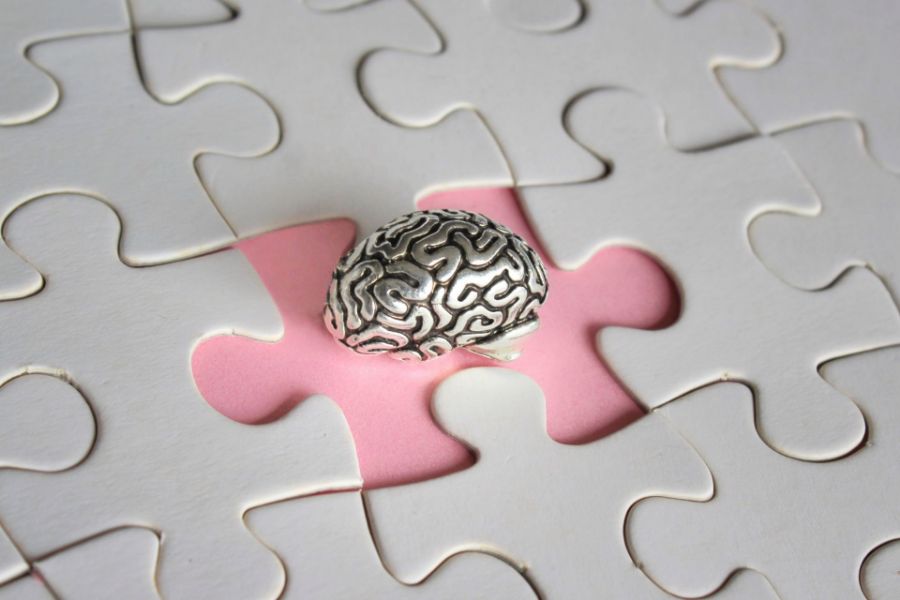Care for your main body controller- THE BRAIN

By Nutritionist Avril
What is Alzheimer’s Disease?
Alzheimer’s disease is a brain degenerative illness that causes reduced functioning and memory loss. It is the most prevalent cause of dementia, which is characterised by a progressive decrease in mental, behavioural, and social abilities that impairs a person’s capacity to operate independently.
Alzheimer’s disease affects the majority of persons over the age of 65. According to the Alzheimer’s Disease Foundation Malaysia, there are about 261,000 persons in Malaysia who have dementia. According to the World Health Organization, there are over 50 million individuals worldwide who have dementia, with nearly 10 million new cases diagnosed each year.
Alzheimer’s disease worsens with time. Alzheimer’s is a progressive illness in which dementia symptoms deteriorate steadily over time. Memory loss is moderate in the early stages of Alzheimer’s, but as the disease progresses, individuals lose the capacity to converse and respond to their surroundings. A person with Alzheimer’s disease lives 4 to 8 years following diagnosis on average, but can survive up to 20 years depending on other circumstances.
The link between Alzheimer’s disease and the brain
Long before the first indications of memory loss, microscopic changes in the brain occur.
There are 100 billion nerve cells in the brain (neurons). Each neuron communicates with many others to build networks. Groups of neurons perform certain functions. Some are thinking, learning, and remembering. Others assist us in seeing, hearing, and smelling.
Brain cells function like small factories to complete their tasks. They receive supplies, create energy, build equipment, and dispose of garbage. Cells also process and retain information, as well as communicate with one another. Coordination, as well as vast amounts of fuel and oxygen, are required to keep everything functioning.
Alzheimer’s disease, according to scientists, disrupts portions of a cell’s manufacturing. They’re not clear where the problem begins. Backups and malfunctions in one system, however, produce issues in other areas, just as they do in a real plant. As the damage spreads, cells lose their capacity to execute their duties and finally die, resulting in permanent brain alterations.
The bad guys in brain
Plaques and tangles, two aberrant formations, are leading suspects in the damage and death of nerve cells. Plaques are deposits of beta-amyloid (BAY-tuh AM-uh-loyd) protein fragments that accumulate in the gaps between neurons. Tangles are twisted threads of tau (rhymes with “wow”) protein that accumulate inside neurons.
Most people build plaques and tangles as they age, but those with Alzheimer’s grow significantly more and in a regular manner, beginning in memory-related areas before spreading to other areas.

Scientists are unsure of the specific function plaques and tangles play in Alzheimer’s disease. Most specialists think they play an important function in preventing communication between neurons and interrupting processes that neurons require to live.
Memory loss, personality changes, difficulties carrying out everyday tasks, and other symptoms of Alzheimer’s disease are caused by the damage and death of neurons.
What factors contribute to Alzheimer’s disease?
Scientists are still unsure what causes Alzheimer’s disease. There is most certainly not a single reason, but rather a combination of circumstances that influence each individual individually.
The most well-known risk factor for Alzheimer’s disease is age. Genetics, according to researchers, may have a role in the development of Alzheimer’s disease. However, genes do not determine fate. A healthy lifestyle may help lower your risk of Alzheimer’s disease. Two big, long-term studies suggest that appropriate physical exercise, a balanced diet, moderate alcohol use, and quitting smoking may be beneficial.
What are the warning signs of Alzheimer’s disease?
Mild Alzheimer’s disease
- Memory loss and other cognitive issues
- Wandering and getting lost
- Having difficulty handling money and paying payments
- Having to repeat inquiries
- Taking longer to do typical everyday chores
- Changes in personality and conduct
Moderate Alzheimer’s disease
- Damage develops in parts of the brain that govern language, reasoning, conscious cognition, and sensory processing, such as the capacity to identify noises and odours accurately, during this period.
- Memory loss and confusion worsen.
- Difficulties identifying relatives and friends.
- Lack of ability to learn new things
- Inability to do multi-step tasks such as dressing or deal with unexpected situations
- Hallucinations, delusions, and paranoia are possible, as can impulsive behaviour
Severe Alzheimer’s disease
Plaques and tangles eventually spread throughout the brain, causing brain tissue to atrophy considerably.
• Unable to converse
• Completely reliant on others for care
• Near the end of life, the individual may spend most or all of their time in bed as the body shuts down
References
- What is alzheimer’s? Alzheimer’s Disease and Dementia. (n.d.). Retrieved November 4, 2022, from https://www.alz.org/alzheimers-dementia/what-is-alzheimers
- U.S. Department of Health and Human Services. (n.d.). Alzheimer’s disease fact sheet. National Institute on Aging. Retrieved November 10, 2022, from https://www.nia.nih.gov/health/alzheimers-disease-fact-sheet
- Centers for Disease Control and Prevention. (2020, October 26). What is alzheimer’s disease? Centers for Disease Control and Prevention. Retrieved November 28, 2022, from https://www.cdc.gov/aging/aginginfo/alzheimers.htm
